Halabos na Hipon was our family's go-to weekend treat that always brought everyone to the table in seconds. I just love watching fresh shrimp turn pink as they dance in a bubbling mixture of butter, garlic, and Sprite (yes, our Filipino secret weapon!), a cooking technique that perfectly captures the resourcefulness of Filipino home cooking.
Every time I make this 15-minute recipe, the aroma of toasted garlic and sweet shrimp instantly transports me back to those Sunday lunches where we'd gather around the table, peeling shrimp with our fingers, dipping each piece in spiced vinegar, and fighting over who gets to drink the last drops of that heavenly sauce with their rice.
This Halabos na Hipon recipe has become my ultimate baon-worthy dish that never fails to impress, whether I'm bringing it to potlucks or serving it for my own family's dinner. The beauty lies in its simplicity: just fresh shrimp, aromatic garlic, butter, and our uniquely Filipino twist of using soda to create a sauce that's perfectly balanced between sweet and savory.
Once you master this easy technique, it'll become your new favorite way to cook shrimp, just like it has been in Filipino households for generations.
Jump to:
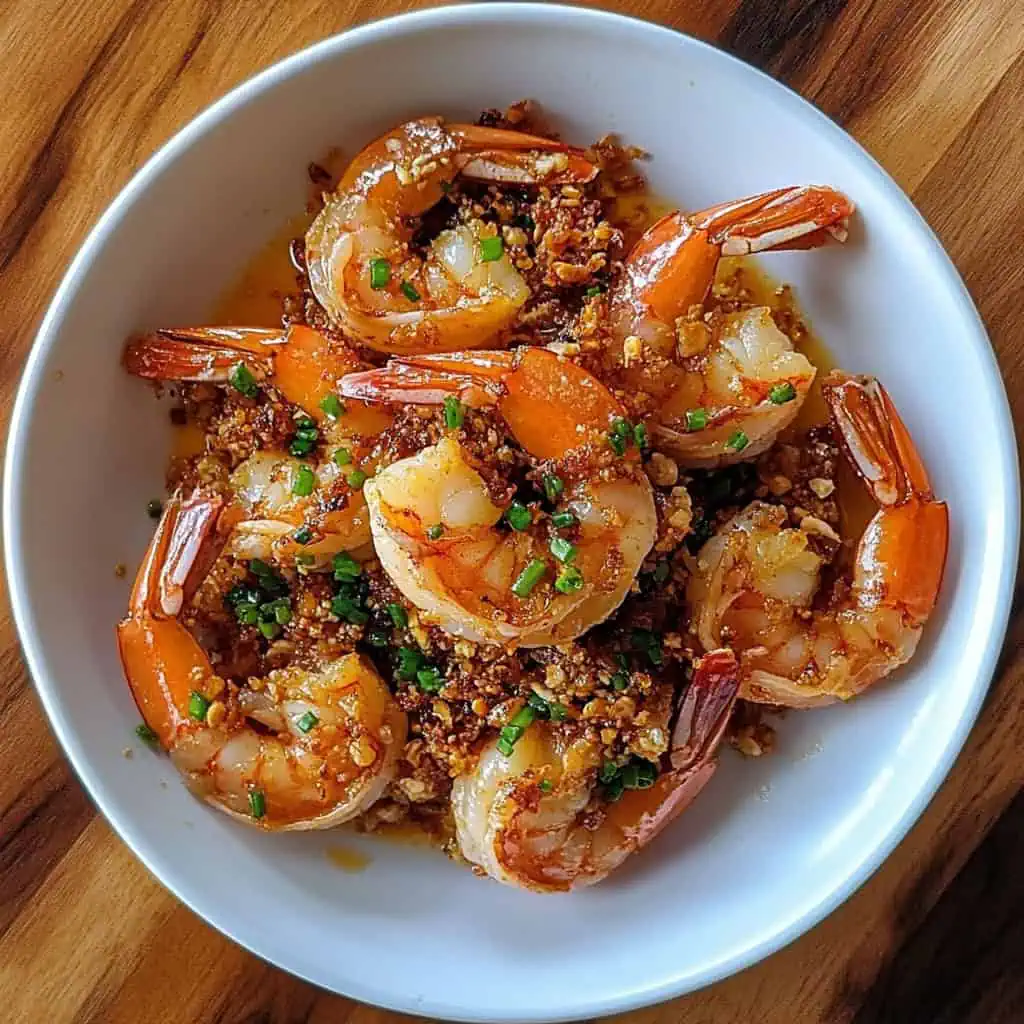
Why You'll Love This Recipe
- Ready in under 20 minutes
- Uses simple, everyday ingredients
- Perfect balance of garlic and butter flavors
- Restaurant-quality dish at home
- Great for both casual dinners and special occasions
- Versatile - can be served multiple ways
- No special cooking skills required
Ingredients
These ingredients create the perfect balance of flavors and textures. The head-on shrimp provide natural sweetness and umami, while butter adds richness that coats each bite. Garlic delivers aromatic depth, and the surprising addition of Sprite tenderizes the shrimp while creating a slightly sweet sauce.
The oil prevents butter from burning, chili flakes add gentle heat, and salt and pepper enhance all the flavors. This combination is quintessentially Filipino, blending traditional seafood cooking with clever modern additions.
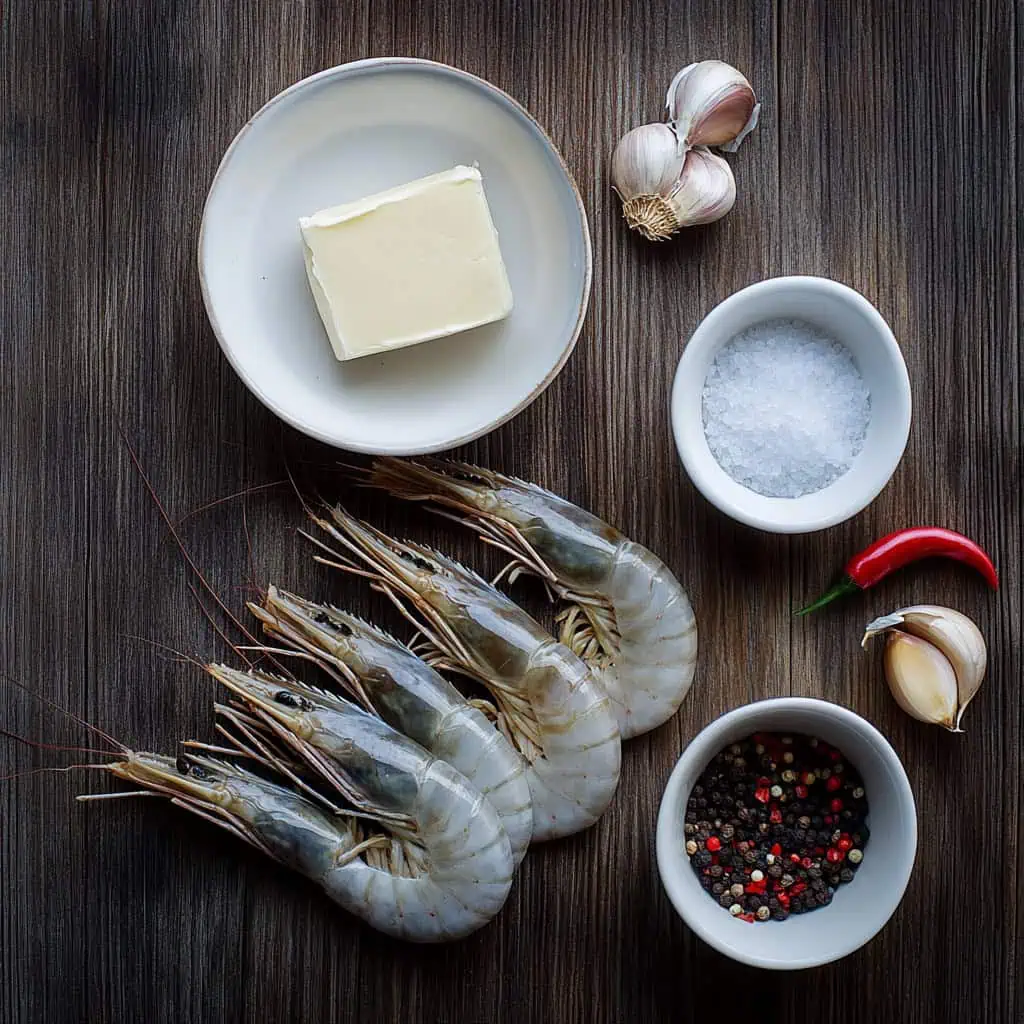
- 2 pounds large shrimp (head-on)
- 2 tablespoons butter
- 1 teaspoon canola or olive oil
- 1 head garlic, peeled and minced
- ½ cup 7-up or Sprite
- ½ teaspoon red chili pepper flakes
- Salt and pepper to taste
Equipment
- Large skillet or wok - Provides even heat distribution for cooking shrimp uniformly
- Kitchen scissors - For trimming shrimp tendrils and making preparation easier
- Tongs - Allows for easy turning and handling of shrimp while cooking
- Colander - Essential for draining shrimp thoroughly before cooking
- Measuring cups and spoons - For accurate ingredient proportions
- Garlic press (optional) - Makes mincing garlic quicker and more consistent
- Sharp knife and cutting board - For prep work and mincing garlic if not using a press
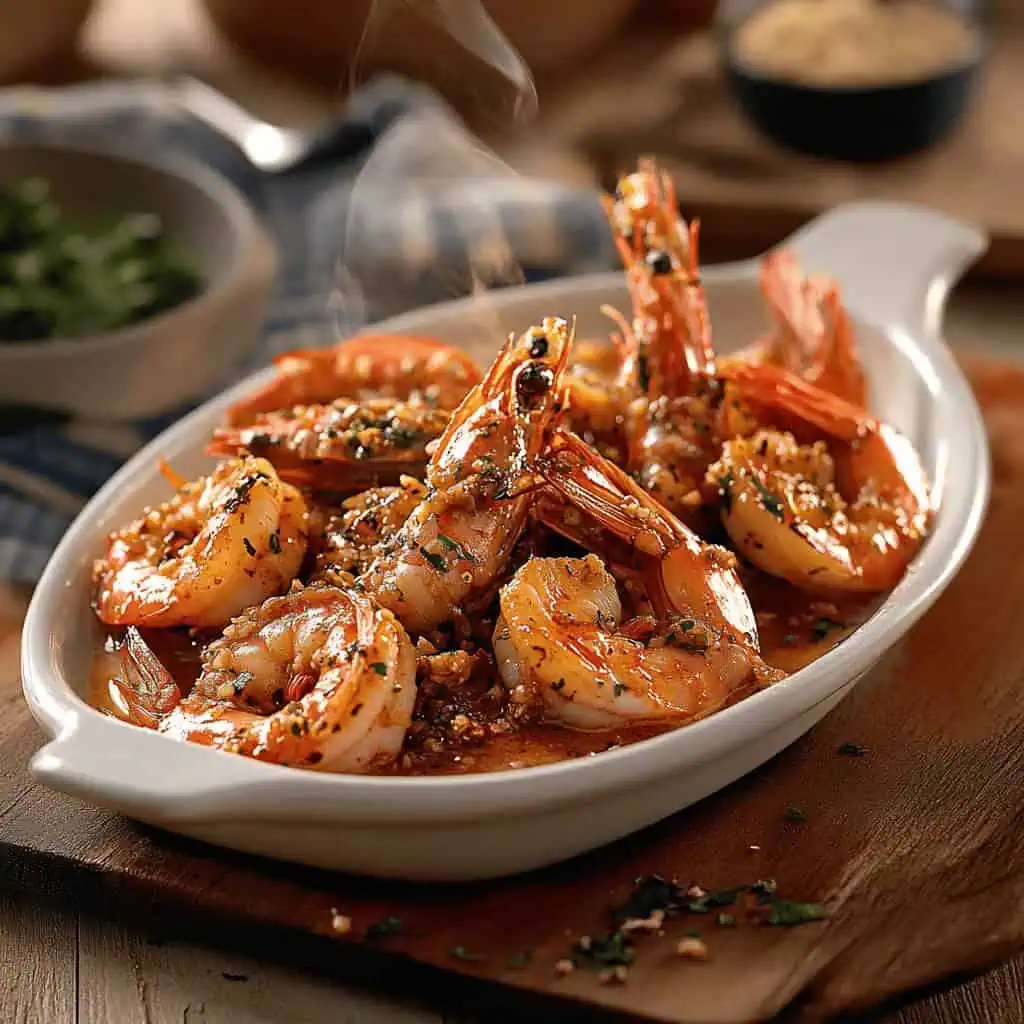
How To Make
- Begin by preparing the shrimp. Using kitchen scissors, trim off the tendrils, rinse thoroughly, and drain very well in a colander. It's essential to remove excess water for better browning.
- Place a large skillet or wok over low heat. Add butter and oil, allowing the butter to begin melting. This combination prevents the butter from burning.
- Once the butter has melted, add minced garlic and stir frequently for 30-40 seconds until lightly golden brown. Be careful not to let the garlic burn.
- Increase heat to high. Add the shrimp and cook for 1 minute, stirring regularly. When the shrimp start changing color, pour in the 7-up/Sprite. Add chili flakes, salt, and pepper.
- Cook for 2-3 minutes until the shrimp turn pink and the liquid reduces slightly. Don't overcook - the shrimp should form a loose "C" shape when done. Serve immediately with steaming rice and your choice of dipping sauce.

Tips from Lola's Kitchen
- Choose fresh shrimp that smell like the ocean - avoid any ammonia smell which indicates they're not fresh
- Keep the heads on for extra flavor in the sauce
- Don't skip the oil with butter - it raises the smoke point and prevents burning
- Pat shrimp dry before cooking to achieve better browning and caramelization
- Cook shrimp in a single layer whenever possible for even results
- Watch the garlic carefully - it can go from golden to burnt in seconds
- Let the soda bubble and reduce slightly before removing from heat for maximum flavor
- Taste before serving and adjust seasoning as needed - fresh seafood often needs less salt than you might think
Substitutions
- Shrimp: Use prawns or smaller shrimp varieties if large ones aren't available
- 7-up/Sprite: Mix 3 tablespoons fresh calamansi or lemon juice with ⅓ cup water and 1 teaspoon sugar
- Butter: Margarine can work in a pinch, though butter gives the best flavor
- Fresh garlic: Garlic powder (1 tablespoon) as a last resort, though fresh is strongly recommended
- Red pepper flakes: Fresh bird's eye chilies, thinly sliced, or a dash of hot sauce
- Canola/olive oil: Any neutral cooking oil will work well
- Head-on shrimp: Headless shrimp will still taste good but provide less sauce flavor
Troubleshooting
- Shrimp too rubbery
- Solution: You've overcooked them. Next time, remove from heat as soon as they turn pink and curl into a loose "C" shape. Remember that shrimp continue cooking from residual heat.
- Garlic burning
- Solution: Your heat was too high when cooking the garlic. Keep heat low and be patient, or add the garlic after the shrimp have partially cooked.
- Too much liquid in the pan
- Solution: Either the shrimp weren't dried well enough or the heat wasn't high enough during final cooking. Ensure shrimp are thoroughly patted dry and increase heat to reduce sauce more quickly.
- Not enough flavor
- Solution: Try marinating shrimp in a little salt for 15 minutes before cooking, and don't be afraid to add more garlic. Also ensure you're using fresh, high-quality shrimp.
- Shrimp sticking to the pan
- Solution: Your pan wasn't hot enough before adding shrimp or you moved them too soon. Let them sear properly before attempting to move them.
Storage & Reheating
- Storage: Place cooled shrimp in an airtight container and refrigerate for up to 2 days
- Best practice: This dish is truly best enjoyed fresh, right after cooking
- If reheating is necessary:
- Microwave: Heat for just 30 seconds on medium power to avoid overcooking
- Stovetop: Quick stir-fry with a splash of water to restore moisture
- Avoid reheating more than once as shrimp quality deteriorates quickly

FAQ
Can I use frozen shrimp for this recipe?
Yes, but for best results, thaw completely in the refrigerator overnight and pat very dry before cooking. Fresh shrimp will always give superior flavor, but good-quality frozen shrimp work well too.
Why use soda in this recipe?
The carbonation and subtle citrus flavor in lemon-lime soda help tenderize the shrimp while adding a natural sweetness that balances the savory elements. It's a Filipino cooking hack that creates a uniquely delicious sauce.
Can I remove the shells before cooking?
Yes, you can, but cooking with shells on provides more flavor to the dish. If you prefer easier eating, you can remove shells but leave the heads on for flavor, or ask your fishmonger to devein them while keeping shells intact.
How do I know when shrimp are perfectly cooked?
Perfectly cooked shrimp should be pink with red tails and slightly curled into a loose "C" shape. If they curl into a tight "O" shape, they're overcooked. The flesh should be opaque and just firm to the touch.
Can I make this dish ahead for a party?
While best served immediately, you can prepare it up to 2 hours ahead and reheat gently just before serving. For parties, I recommend cooking the shrimp just slightly underdone initially, then quickly finishing them in the sauce right before serving.
What's the best type of shrimp to use?
Look for fresh, large or jumbo shrimp with heads on. In the Philippines, we often use what's called "suahe" (white shrimp) or "sugpo" (tiger prawns). The size labeled as 16/20 per pound works well for this recipe.
Can I double the recipe for a larger crowd?
Yes, but cook in batches rather than overcrowding the pan. Overcrowding will cause the shrimp to steam rather than sauté properly, resulting in less flavor development.
Is this dish spicy?
With the recipe as written, it has just a mild heat. The chili flakes add a gentle warmth rather than significant spice. You can easily adjust by adding more or less chili to suit your preference.
Related
Looking for other recipes like this? Try these:
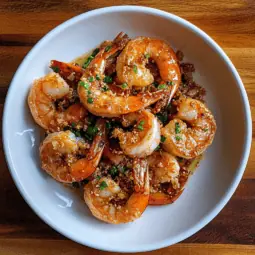
Halabos na Hipon (Filipino Garlic Butter Shrimp)
Equipment
- Large skillet or wok (Kawali) for even heat distribution
- Kitchen scissors (Gunting) for trimming shrimp
- Tongs [Sipit] for easy turning of shrimp
- Colander (salaan) for draining shrimp
- Measuring cups and spoons (Panukat)
- Garlic press (optional) for mincing garlic
- Sharp knife and cutting board (kutsilyo at sangkalan)
Ingredients
- 2 pounds large shrimp hipon, head-on
- 2 tablespoons butter mantikilya
- 1 teaspoon canola or olive oil langis
- 1 head garlic bawang, peeled and minced
- ½ cup 7-up or Sprite
- ½ teaspoon red chili pepper flakes pulang siling durog
- Salt asin and pepper (paminta) to taste
Instructions
- Begin by preparing the shrimp. Using kitchen scissors, trim off the tendrils (buhok), rinse thoroughly (hugasan), and drain very well in a colander (patuyuin). It's essential to remove excess water for better browning.
- Place a large skillet or wok (kawali) over low heat (mababang apoy). Add butter (mantikilya) and oil (mantika), allowing the butter to begin melting (140°F/60°C). This combination prevents the butter from burning.
- Once the butter has melted, add minced garlic (bawang) and stir frequently for 30-40 seconds until lightly golden brown (165°F/74°C). Be careful not to let the garlic burn.
- Increase heat to high (malakas na apoy - 375°F/190°C). Add the shrimp and cook for 1 minute, stirring regularly. When the shrimp start changing color, pour in the 7-up/Sprite. Add chili flakes (pulang siling durog), salt (asin), and pepper (paminta).
- Cook for 2-3 minutes until the shrimp turn pink and the liquid reduces slightly. Don't overcook - the shrimp should form a loose "C" shape when done. Serve immediately with steaming rice (kanin) and your choice of dipping sauce (sawsawan).
Tips from Lola's Kitchen
- Choose fresh shrimp that smells like the ocean - avoid any ammonia smell
- Keep the heads on for extra flavor (sabaw)
- Don't skip the oil with butter - it prevents burning
- Pat shrimp dry before cooking to achieve better browning
- Keep shrimp in a single layer while cooking for even results
Nutrition
The Story Behind Halabos na Hipon (Filipino Garlic Butter Shrimp)
In the bustling coastal regions of the Philippines, where fresh seafood arrives daily at local markets (palengke), Halabos na Hipon emerged as a brilliant solution to showcase the natural sweetness of fresh shrimp. The term "halabos" in Filipino cooking refers to a gentle steaming method, traditionally done with just salt and water, that coastal communities have used for generations to prepare freshly caught seafood.
What makes this dish uniquely Filipino is the ingenious addition of carbonated lemon-lime soda - a cooking hack discovered during the American influence in Philippine cuisine. This adaptation transformed the simple steaming process into something extraordinary, as Filipino home cooks found that the soda's carbonation and subtle citrus notes helped tenderize the shrimp while creating a naturally sweet sauce that perfectly complements the seafood's briny flavors.
Today, Halabos na Hipon stands as a testament to Filipino culinary creativity, particularly popular in seafood restaurants along Manila Bay, Roxas Boulevard, and Dampa-style markets where diners can buy fresh shrimp and have it cooked on the spot. The dish has evolved from its humble beginnings, with the addition of butter and garlic elevating it from simple street food to a beloved comfort dish served everywhere from casual carinderia stalls to upscale Filipino restaurants.
Despite its restaurant popularity, Halabos na Hipon remains fundamentally a cherished home-cooked dish. Its preparation method is passed down through generations, with each family adding their own twist - some adding calamansi, others increasing the garlic, and many serving it with their secret sawsawan (dipping sauce) recipes. Whether enjoyed during weekend family lunches, beach outings, or special occasions, this dish exemplifies the Filipino talent for transforming simple ingredients into something extraordinary through clever cooking techniques.
What's particularly special about this cooking method is how it preserves the natural sweetness of the shrimp while infusing it with complementary flavors. Unlike other preparations that might mask the shrimp's natural taste, halabos enhances it, making it a favorite among Filipino seafood lovers who appreciate the pure, unadulterated flavors of fresh seafood.
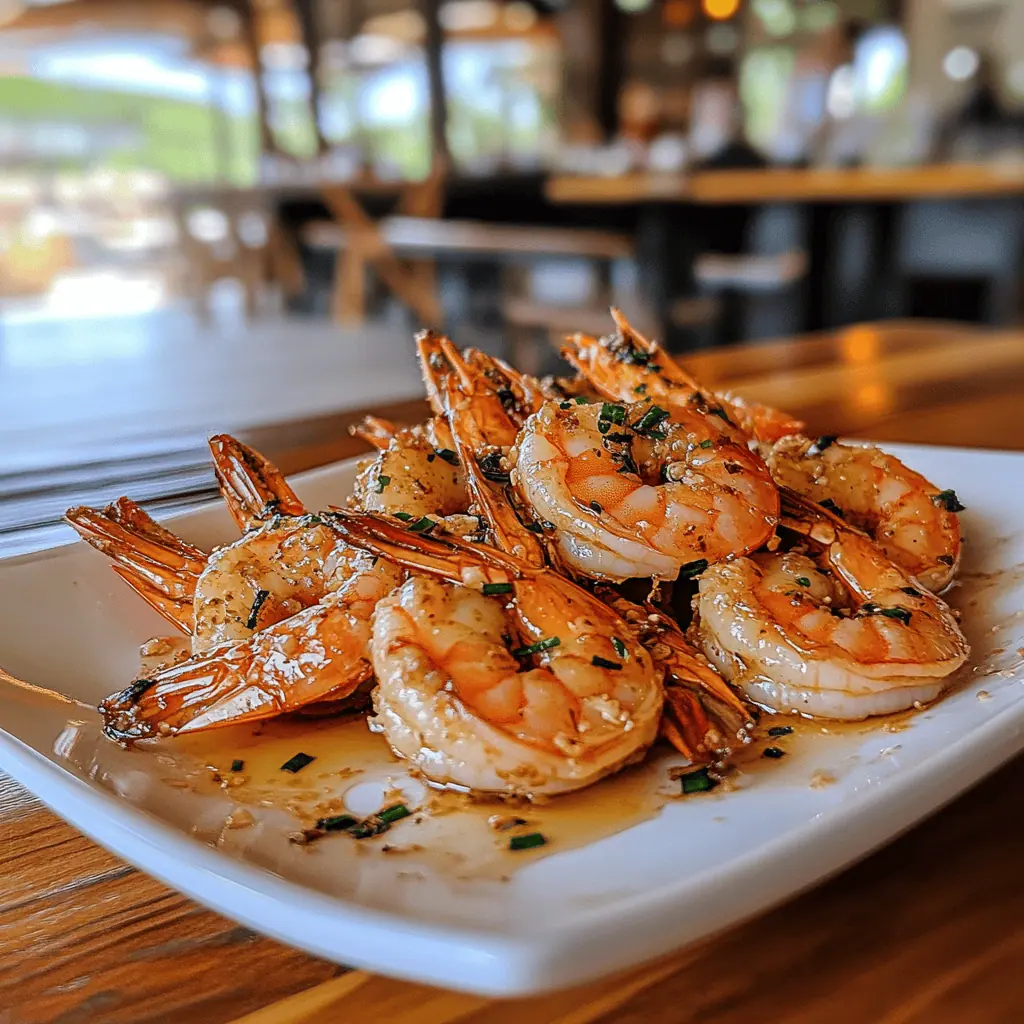









Comments
No Comments